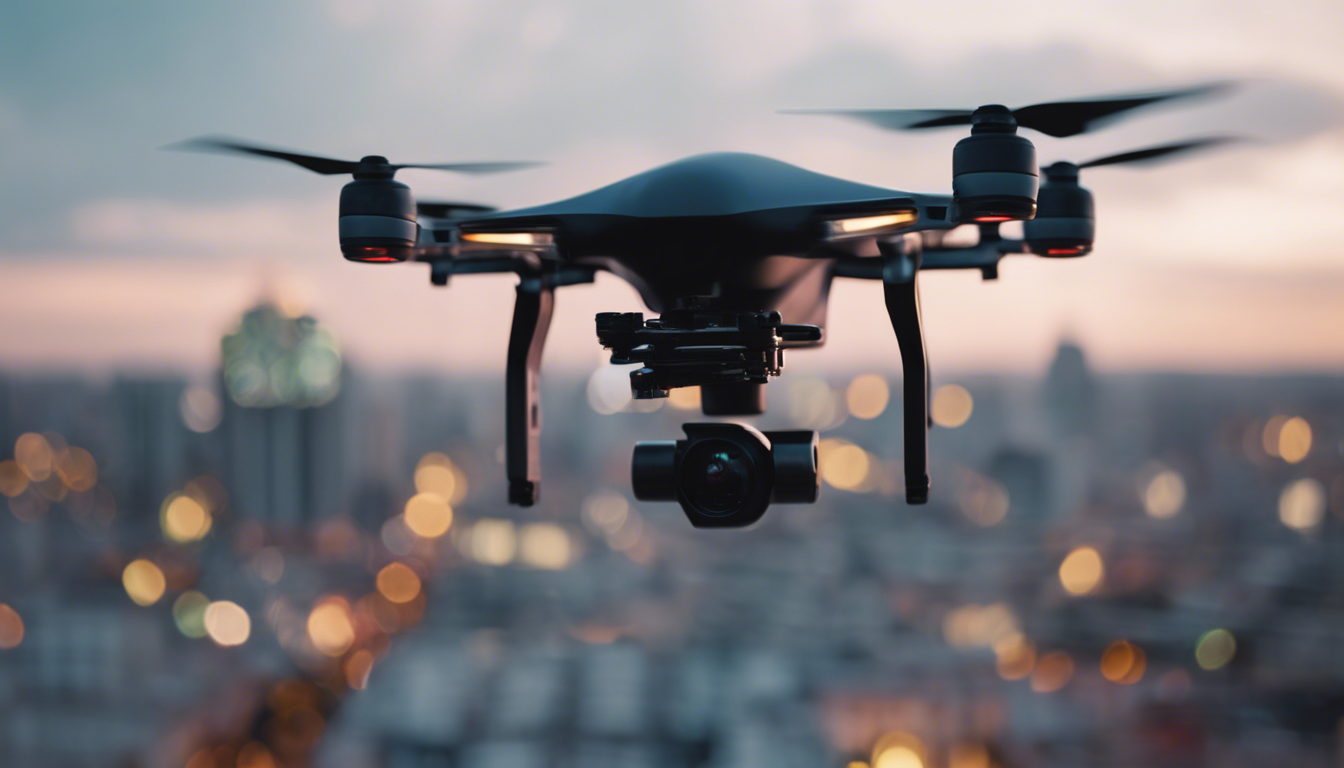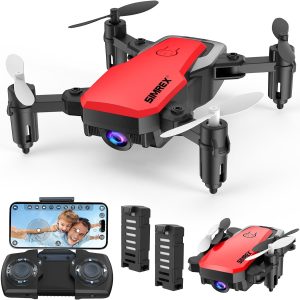
The Evolution of FPV Drone Racing
FPV drone racing, or first-person view drone racing, is a sport that has exploded in popularity over the last decade. The concept is pretty simple: pilots wear goggles that stream live video feed from a camera mounted on the front of their drone, giving them a bird’s-eye view as they navigate through complex courses at high speeds. But FPV drone racing wasn’t always the well-organized, high-octane sport it’s today.
The roots of FPV drone racing can be traced back to Germany in 2011, where hobbyists started experimenting with linking cameras and video goggles to their drones for a more immersive flying experience. It wasn’t long before pilots started challenging each other to races, and by 2013, these informal competitions had gained enough traction to warrant the first organized FPV race event in Australia. A year later, the US followed suit with its own drone racing event held in California.
As FPV drone racing gained momentum, technology evolved in tandem. Early FPV setups were bulky and expensive, often requiring custom-built drones. Today, affordable and sophisticated equipment has made the sport more accessible to enthusiasts worldwide. In tandem with advances in drone technology, dedicated racing leagues like the Drone Racing League (DRL) have also emerged, bringing a level of professionalism and exposure to the sport akin to traditional motorsports. The DRL has even landed broadcasting deals with major networks like NBC and Sky Sports, bringing FPV drone racing into living rooms around the world.
One significant factor in the sport’s growth has been the community that is formed around it. Online forums and social media platforms have fostered a collaborative space where FPV pilots share tips, tricks, and build advice. This sense of community has not only helped novice pilots get off the ground but has also driven innovation as hobbyists tweak and refine their drone builds for better performance.
Despite its soaring popularity, FPV drone racing remains a sport that is continuously evolving. From humble beginnings at makeshift courses to internationally broadcasted events, its evolution is testament not just to technological progress but to the enduring appeal of the thrill of the race.
Essential Equipment for FPV Racing
Getting started with FPV drone racing requires more than just a drone. While many assume the drone itself is the most important component, there’s actually a variety of essential gear needed to take to the skies. One of the most critical pieces of equipment is the FPV goggles. These specialized goggles allow you to see what your drone’s camera is capturing in real-time, giving you the immersive experience that’s fundamental to FPV racing. It is important to invest in a pair this is comfortable and provides a clear and wide field of view.
Next is the drone. Racing drones are specifically designed for speed and agility, and are usually smaller and more lightweight than typical camera drones. Many racers prefer building their own drones from scratch, which allows for customization to suit personal flying styles. Whether you build or buy, you’ll want a drone that can keep up with the rigors of racing, which means durable construction and high-performance motors.
Another piece of necessary gear is the transmitter, which is essentially your remote control. The transmitter is responsible for sending your commands to the drone, so you’ll want one this is reliable and has minimal latency. A quality transmitter can make a significant difference in your racing performance, as every millisecond counts in competitive FPV racing.
Along with the transmitter, you’ll need a receiver, which is mounted on your drone to receive signals from your transmitter. Compatibility between your transmitter and receiver is critical, so make sure you choose models that work well together.
Batteries are another key component of your FPV racing kit. Racing drones consume a lot of power, so you’ll need high-capacity batteries that can keep your drone in the air for longer. It is always a good idea to carry multiple batteries with you to swap out between races or practice runs.
Lastly, don’t forget about accessories like propellers, speed controllers, and an HD camera to record your flights. The propellers should be chosen based on their thrust, efficiency, and durability—this can make a huge difference in your drone’s performance. Speed controllers regulate the power to the motors, directly affecting speed and maneuverability. Optional but beneficial, an HD camera will capture crisp footage of your races that can be used for both analysis and sharing with the FPV community.
While many focus on the drone itself, there are several pieces of essential equipment necessary to participate in FPV racing. From goggles to transmitters to batteries and beyond, each component plays a critical role in how well you can pilot your drone through those high-speed aerial courses.
Key Rules and Regulations for FPV Competitions
Competing in FPV drone races isn’t just about having the fastest drone or the best flying skills; it also involves adhering to a set of rules and regulations that ensure safety and fairness for all participants. One of the first regulations you’ll need to be aware of is the requirement for pilots to use drones that meet specific size and weight categories. That’s done to create a level playing field and to minimize hazards during races.
Additionally, pilots must register with relevant authorities before competing, which may include acquiring a license or permit depending on the location of the competition. Safety is paramount in FPV racing, and as such, many events have strict guidelines about where and how drones can be flown, including height limits and designated flight areas.
Pilots are usually required to adhere to frequency management protocols, meaning they must use assigned frequencies for their video feed to avoid interference with other racers’ feeds. Another critical rule is that pilots cannot interfere with each other’s drones during races, whether intentionally or accidentally. Any form of contact or sabotage could lead to disqualification.
Race officials also have strict guidelines for course design, including the number of obstacles and their complexity. The goal is to challenge pilots while maintaining safety standards. Furthermore, there are often rules about the distance pilots can be from each other and from spectators, to minimize the risk of accidents.
FPV racing events also enforce good sportsmanship and ethical behavior among pilots. Bad behavior, including unsportsmanlike conduct, cheating, or not complying with race officials’ instructions, can result in penalties or expulsion from competitions.
Results and rankings are another area governed by specific rules in FPV competitions. Most races use timing systems to record lap times and determine finishes. Pilots must complete the course as laid out; skipping parts of the track or bypassing obstacles results in penalties or disqualification. In addition, many competitions have rules regarding equipment checks and inspections before races to ensure all drones are compliant with the event’s standards.
Ultimately, these regulations are put in place not just to maintain order but to ensure each race is safe and enjoyable for pilots and spectators alike. Those looking to get involved in FPV racing should take the time to familiarize themselves with these rules, as they are an integral part of the sport.
Tips and Tricks for Beginner FPV Pilots
If you’re new to FPV drone racing, the learning curve can seem quite steep. However, with some useful tips and tricks, you can quickly find your feet and start zipping through the air like a seasoned pro. One of the first things any beginner should focus on is practice. Lots of it. It might sound cliché, but the more time you spend piloting your drone, the better you’ll understand its capabilities and limitations.
It is also important to start slow. Many beginners make the mistake of jumping straight into racing without mastering the basics of drone flying. Begin with hovering, then progress to flying in different directions and finally, incorporate turns and obstacles. As you practice, pay attention to your drone’s response to your inputs and start getting comfortable with adjusting mid-flight.
Simulators can be incredibly helpful for beginners. They offer a risk-free environment to hone your skills before taking to the sky. There are several simulators available that replicate the physics of drone flying quite accurately, allowing you to get a feel for FPV racing without the associated costs and risks of crashing your physical drone.
Another useful tip for beginners is to mark out a practice course. This could be in an open field or a spacious indoor area with cones or other markers. This will help you practice maneuvering through gates and around obstacles, which is a critical skill in FPV racing.
The community aspect of FPV racing is also a goldmine for beginners. Engaging with experienced pilots online or joining a local flying club can provide invaluable insights. Veteran racers often share their expertise and might offer tips tailored to your personal flight style or the specific track conditions you’re practicing with.
Furthermore, it’s important not to overlook the importance of drone maintenance. Regularly check your drone for any damage and make necessary repairs before it leads to bigger issues. Also, ensure all your firmware is up to date, as manufacturers often release updates that improve performance and fix bugs.
Finally, don’t be discouraged by crashes – they are an inevitable part of the learning process in FPV drone racing. Take each crash as an opportunity to learn what went wrong and how you can correct it in the future. Persistence is key; every expert pilot started as a beginner at some point!
Remember to practice regularly, start slow, use simulators, mark out a practice course, engage with the FPV community, maintain your drone, and learn from your crashes. With these tips and tricks up your sleeve, you’ll be well on your way to becoming a skilled FPV pilot.
